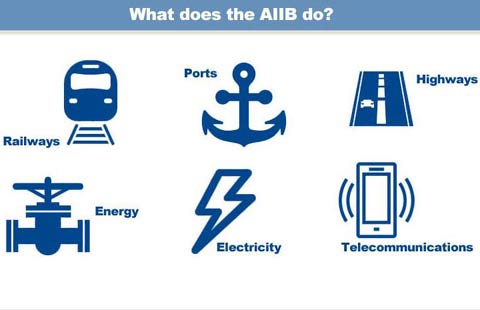Novartis R&D builds healthier China
(chinadaily.com.cn) Updated: 2015-04-16 15:03
 |
|
Yin Xudong, chairman of Novartis Greater China |
Q: Now we've got some idea about the global importance of your new R&D site in Shanghai, please tell us some more about the site itself.
A: I believe we are unique in China in the industry. It's first because we have a plan to differentiate from other pharmaceutical companies in China, and second, we started to implement our plan from early on.
Now our China R&D is unique by having already covered every main stage in pharmaceutical product development.
Pharmaceutical development needs a global network. But it also consists of many concrete capabilities. You need, to start with, early stage lab research capability, the key of which is molecular biology; chemosynthetic capability; the capability to convert lab results into human reactions; the capability of clinical evaluation, from early stage and late stage; and the capability of mass production.
Based on our strategic plan about China, we have already built up all these capabilities, primarily in Shanghai.
Q: In Zhangjiang (Zhangjiang Hi-Tech Park in Pudong district, Shanghai)?
A: Yes. Zhangjiang is our main base. And the system branches out in the Yangtze River Delta. We have, for instance, a chemical R&D centerin Changshu (a town around 100 kilometers from Shanghai). They take on tasks from our global research system, working together with scientists in Massachusetts and Basel, Switzerland.
Knowing this is important. Frequently I'm asked: "Where do you guys come up with your China drug?" This is a question I can't answer. I'd just tell them: "We do global research. We're part of one global research network."
Q: But still, your China-based R&D would feature a different emphasis from time to time, wouldn't it?
A: Ah, yes. Our global R&D is focused on areas like oncology, immunology, neuroscience and so on, in general new drugs needed by healthcare in an aging society. This is our global focus, which reflects basic market demand in North America and Western Europe. As for the emerging markets, such as China, there is still a large demand arising from some chronic conditions and even epidemic diseases.
The demand for modern medical care and medicine has three stages: In the first stage, the main demand is for cures of epidemic diseases. In the second stage, demand is mainly from some chronic conditions, including hypertension, hyperlipidemia, and hyperglycemia. And the third stage is about all the problems associated with aging.
China is right now between the first and second stages. So our Shanghai R&D is to meet a somewhat wider range of demand than in North America and Western Europe. It will play a part in the global efforts to develop drugs for chronic conditions and aging. At the same time, it will also look into some characteristics of China demand, such as Hepatitis B.
Q: Can China-oriented research results also serve other developing countries?
A: Yes. A best example can be Coartem, the artemisinin-based combination therapy (ACT) for malaria first developed in China. Novartis cooperated with Chinese scientists in its development and delivery over 20 years ago. Now there is little demand for the drug in China, while in Africa, malaria remains a prevalent threat. Novartis provides a supply every year for the World Health Organization's distribution program.
Q: In terms of global collaboration, have you anything to share with us?
A: We practically study all conditions associated with aging. We have a project, for instance, on the natural recovery of hearing by using a growth factor to stimulate the renewal of hair cells in the cochlea. This is one project on which our Shanghai-based scientists are working with their colleagues in Cambridge and Basel quite intensively these days.
Our research also involves many Chinese partners. We have quite a few ongoing oncological projects in Shanghai. One of them, a world-class innovative multi-target therapy for lung cancer, is being developed through clinical collaboration with the People's Hospital of Guangdong Province.
Q: That's a lot of activity. How much more capability do you think Novartis China can take on after the completion of your new Shanghai R&D facility?
A: We don't have a 10-year plan, or five-year plan on that part. But doubtless the number of our scientists will rise year by year. I don't see any problem in doubling its staff in three to five years. It may increase more quickly once strategic demand occurs.
Q: That means you're going to recruit a lot of young people from China. Are they effective?
A: There are three types of people in our Shanghai R&D staff. Expats, who make up only 5 percent. Chinese scientists recruited from universities abroad, around 25 percent. And the rest, from 60 to 70 percent, are local hires. These are mostly university graduates. Some with research experience in other companies.
The young local hires are all smart, have strong knowledge and impressive academic grades. By contrast, when they just arrive in their new jobs, they tend to share some common weaknesses, too, such as a passiveness in contributing to innovative teamwork, a lack of courage to think by oneself, to raise questions, and to learn from one's own mistakes.
Such weaknesses are a burden that they carry from the Chinese education system. It is for us to help them change.
Workplace guidance is provided on a daily basis. Leadership training goes on regularly.
In addition, we have a corporation-wide exchange program, a quite expensive one, in which people from our Chinese staff are placed, usually for several months, in a more international environment in other countries.
Compared with a few years ago, we're glad we do see some progress. It's partly because society is more open; there's more information around. It's also partly because of the adaptations that we've made to Chinese human resources. Now we know at least what kind of training, what kind of help, and what kind of management they need.
But still, we continue to face a short supply of the best innovative people. It remains a problem for us, as it does for China's entire health service and medicine industry.
We hope that the government, especially the education system, can help us make changes, so that it can not only provide us with more high quality recruits, but also benefit the whole society's potential for innovation.
- Ministry to work at lowering mobile fees
- Fast & Furious on Chinese stock market
- 'Sorry' to those who say 'China collapse'
- China Premier says 7% growth hard to achieve, spurns devaluation
- China's Q1 power consumption up 0.8%
- Russian experts see economic, strategic benefits from AIIB membership
- Nippon Paint Spreads a Coat of Love in Sichuan
- 2 new types of stock index futures start trading

















